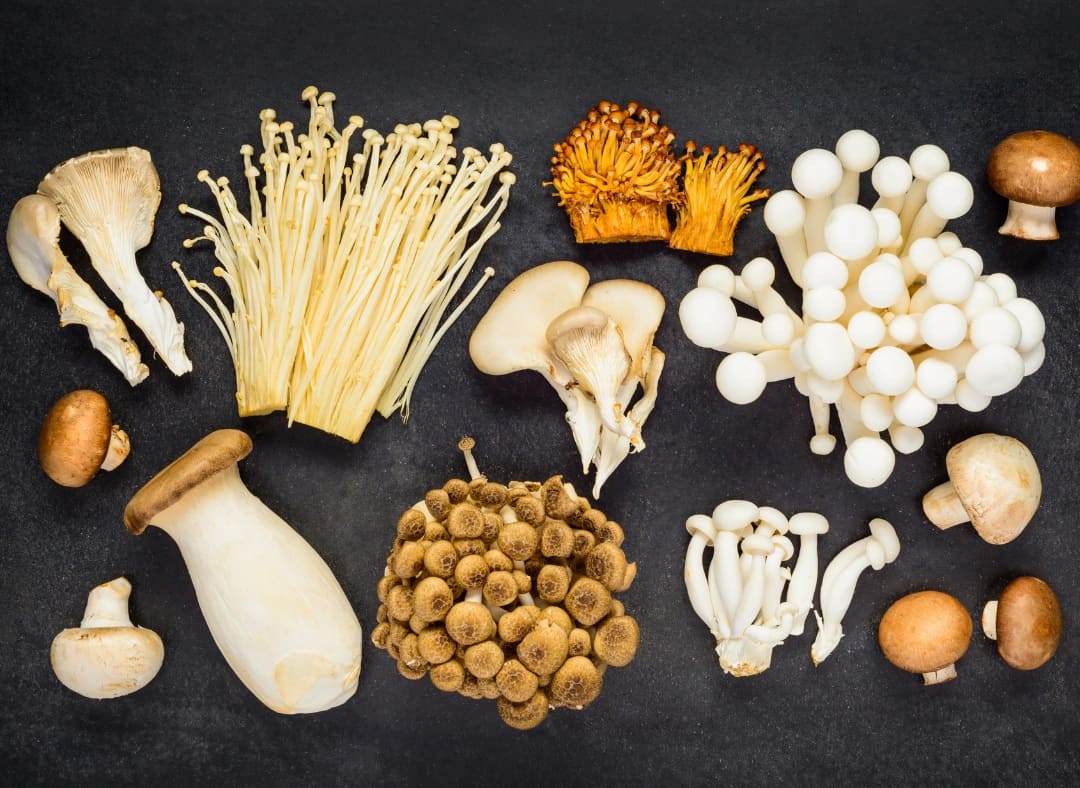Picture this: You’re wandering through your local farmer’s market when you spot a vendor with an array of mushrooms that look like they belong in a fairy tale. Golden chanterelles catch the morning light, while shaggy lion’s mane mushrooms seem to beckon from their display baskets.
You’ve always stuck to basic button mushrooms at the grocery store, but suddenly you’re curious—what amazing flavors and textures have you been missing?
If you’ve ever found yourself intimidated by the diverse world of fungi, you’re not alone. Most people consume the same few varieties their entire lives, missing out on an incredible spectrum of flavors, textures, and culinary possibilities.
But here’s the exciting truth: exploring different types of mushrooms is like discovering a whole new dimension of cooking.
Why Venture Beyond Basic Button Mushrooms?
While button mushrooms make up roughly 90% of mushroom consumption in the United States, they represent just a tiny fraction of the edible varieties available. Think of it this way—if you only ever ate iceberg lettuce, you’d miss out on the peppery bite of arugula, the buttery richness of butter lettuce, or the satisfying crunch of romaine.
The mushroom world offers similar diversity, with flavors ranging from delicate and sweet to bold and meaty, textures from crispy to creamy, and applications from simple sautés to gourmet centerpieces.
Mushrooms also pack impressive nutritional benefits. They’re naturally low in calories and fat while providing protein, fiber, B vitamins, selenium, and potassium. Many varieties offer unique compounds that support immune function, heart health, and even cognitive performance.
When exposed to UV light during growing, mushrooms become one of the few non-animal sources of vitamin D, making them particularly valuable for vegetarians and vegans.
Whether you’re seeking satisfying meat substitutes, looking to boost nutrition, or simply wanting to break out of a cooking rut, understanding different mushroom varieties will transform your culinary adventures.
Understanding the Mushroom Marketplace: Why Some Cost More Than Others
Before diving into specific varieties, it’s helpful to understand what drives mushroom availability and pricing. This knowledge will help you make informed decisions about when to splurge on premium varieties and when to stick with affordable staples.
Most mushrooms fall into two categories: cultivated and wild. Cultivated mushrooms like buttons, creminis, and shiitakes are grown year-round in controlled environments on substrates like compost, sawdust, or specialized growing media.
This consistent production keeps them affordable and widely available. Wild mushrooms, however, can only be foraged during specific seasons and often resist cultivation attempts, making them scarce and expensive.
👉 Here’s How to Find, Identify and Forage Wild Strawberries Like a Pro
The growing method also affects flavor and texture. Mushrooms grown on different substrates develop unique characteristics—shiitakes grown on oak logs taste different from those grown on sawdust blocks, just as wine grapes reflect their terroir.
Seasonal availability particularly affects wild varieties, with morels appearing only in spring, chanterelles in late summer and fall, and some varieties disappearing entirely during drought years.
This seasonal rhythm explains why a pound of fresh morels might cost $60 in spring but be completely unavailable in winter, while a reliable cultivated variety like cremini maintains steady pricing year-round. Understanding these patterns helps you plan special meals around peak seasons and budget accordingly.
Beginner-Friendly Mushrooms: Your Gateway to Fungi
The Agaricus Family: Three Mushrooms, One Species
Here’s a mind-bending fact that will change how you view the mushroom aisle: button, cremini, and portobello mushrooms are actually the same species (Agaricus bisporus) at different maturity stages.
Button mushrooms are the babies, harvested young and mild. Creminis are the teenagers, allowed to develop more complex flavors and firmer texture. Portobellos are the fully mature adults, with concentrated flavors and substantial heft.
1. Button Mushrooms offer the mildest entry point into mushroom cooking. Their neutral flavor makes them perfect for absorbing other ingredients—think of them as the tofu of the mushroom world.
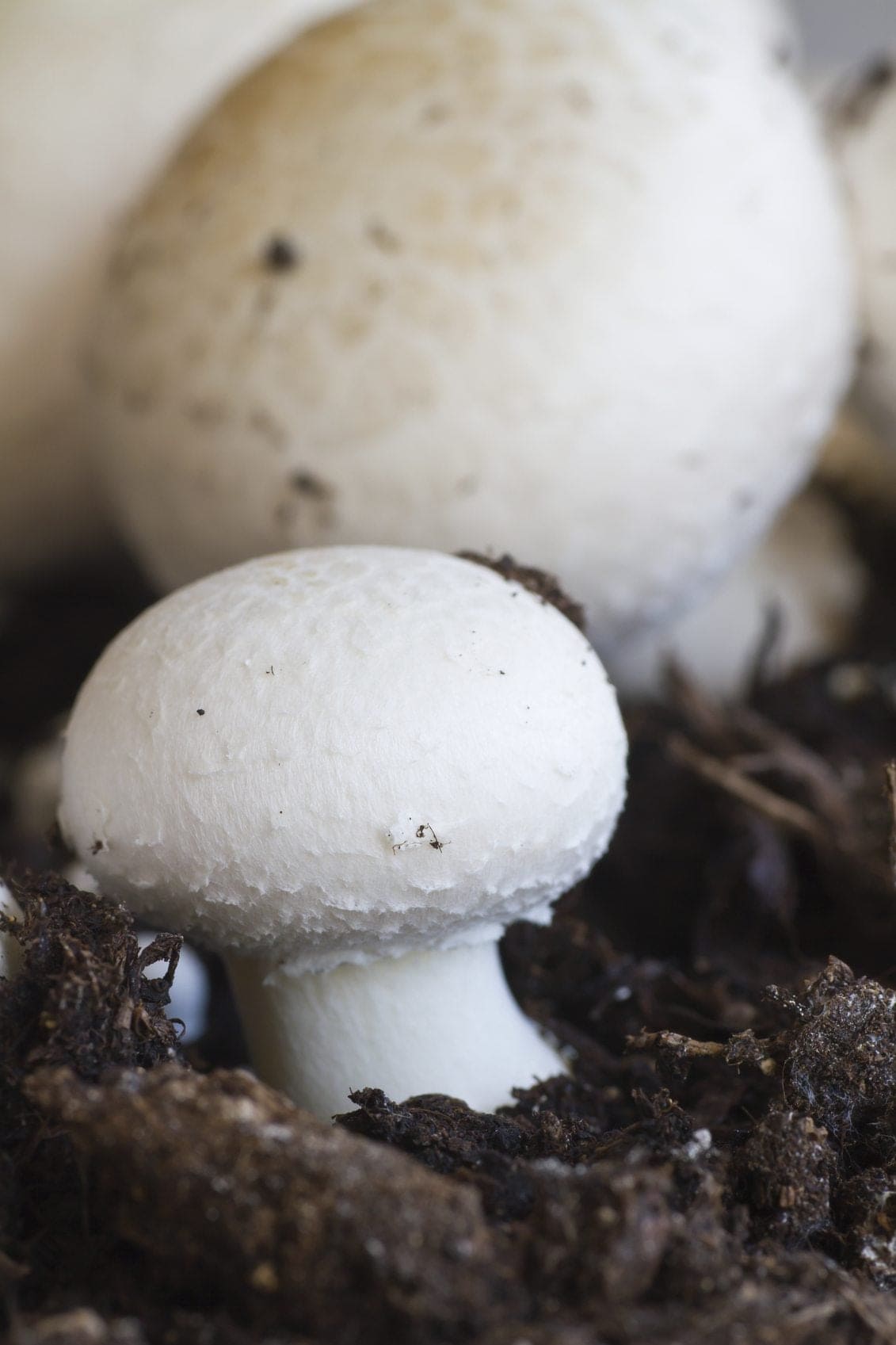
They work beautifully in creamy sauces, soups, and anywhere you want mushroom texture without overwhelming flavor. When roasted at high heat with olive oil and herbs, even humble buttons develop surprising depth and almost meaty satisfaction.
2. Cremini Mushrooms provide a step up in complexity without intimidating newcomers. Their slightly deeper, earthier flavor and firmer texture make them ideal for dishes where you want the mushrooms to hold their shape and contribute more distinct flavor.
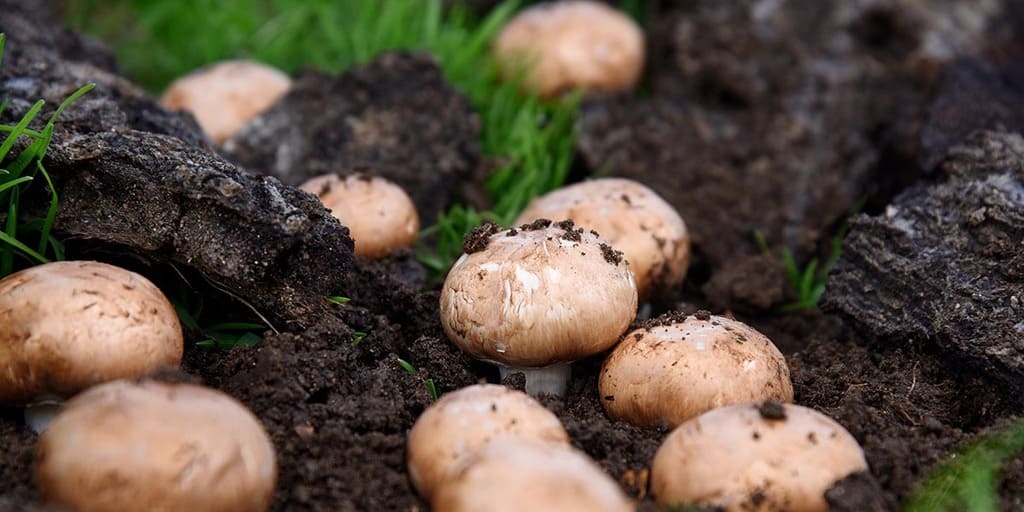
They’re particularly wonderful in grain-based dishes like risotto or pilaf, where their subtle nuttiness complements the starch beautifully.
3. Portobello Mushrooms represent the dramatic end of this spectrum. With their large caps and dense, almost steak-like texture, they’re nature’s answer to vegetarian grilling. Their concentrated umami flavor can stand up to bold marinades and high-heat cooking methods.
The key to great portobellos is removing the dark gills if you want to avoid them coloring your entire dish black, though the gills are perfectly edible and add intense mushroom flavor.

I remember the revelation of realizing these three “different” mushrooms were actually the same species. It was like discovering that tadpoles, juvenile frogs, and adult frogs were related—obvious in hindsight, but mind-blowing at the time.
Shiitake Mushrooms: Your Introduction to Distinctive Flavors
Shiitakes represent a significant step up in flavor complexity and are your gateway to truly distinctive mushroom varieties. Native to East Asia and cultivated for over 6,000 years, these umbrella-shaped mushrooms pack serious umami punch—that savory, almost meaty fifth taste that makes food deeply satisfying.

Fresh shiitakes have a rich, woodsy flavor with subtle smokiness, while dried varieties concentrate these flavors dramatically. Their stems are tough and fibrous, so always remove them before cooking, but don’t discard them—they make exceptional stock that forms the backbone of many Asian soups and broths.
The texture of properly cooked shiitakes is substantial and meaty, making them excellent for adding protein-like satisfaction to vegetarian dishes. They’re particularly wonderful in stir-fries, where their firm texture holds up to high heat, and in slow-cooked dishes where they have time to infuse their deep flavors throughout.
When working with dried shiitakes, rehydrate them in hot water for about 20 minutes. The soaking liquid becomes an intensely flavored mushroom stock that’s too precious to waste—use it in the same dish or save it for soups and sauces.
Oyster Mushrooms: The Gentle Shapeshifters
Oyster mushrooms might look exotic with their fan-shaped caps and delicate appearance, but they’re actually among the most user-friendly varieties for home cooks. Their mild, subtly sweet flavor has just a hint of anise, making them incredibly versatile without being overwhelming.
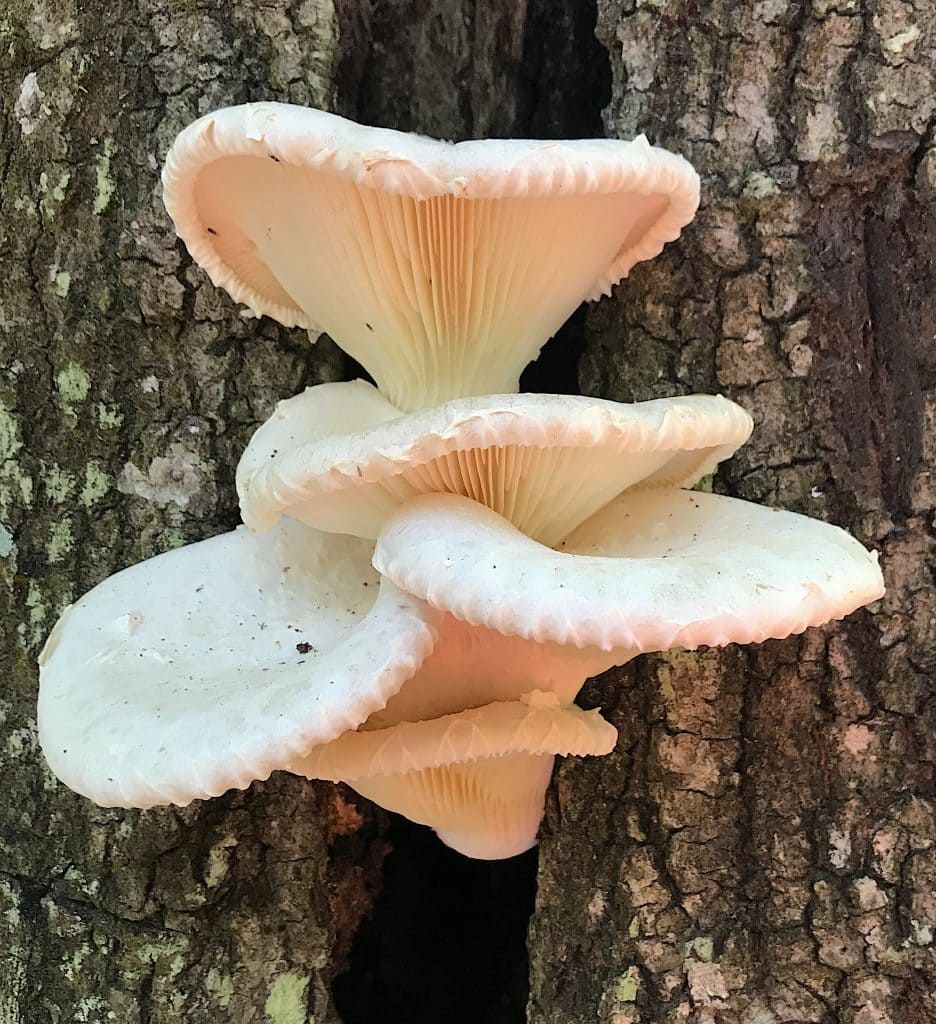
What makes oyster mushrooms truly special is their unique ability to shred into convincing meat-like textures.
Unlike other mushrooms that maintain their shape when cooked, oysters naturally pull apart into strands that remarkably resemble pulled pork or chicken. This characteristic, combined with their neutral flavor that readily absorbs marinades and seasonings, makes them invaluable for plant-based cooking.
Fresh oyster mushrooms cook quickly—just a few minutes in a hot pan—and can become tough if overcooked. They’re excellent in stir-fries, where their quick cooking time matches perfectly with crisp vegetables, and they shine in applications where you want mushroom substance without strong mushroom flavor.
Intermediate Adventures: Expanding Your Mushroom Horizons
Maitake: The Dancing Mushroom
Maitake mushrooms, also called hen of the woods, grow in spectacular frilly clusters that can weigh several pounds and resemble feathered tails. In Japanese, “maitake” means “dancing mushroom”—legend says people danced with joy when they found these prized fungi.
Beyond their poetic name, maitakes offer rich, earthy flavor with subtle peppery notes and a texture that holds up beautifully to longer cooking methods.
Their unique feathery structure provides lots of surface area, making them ideal for roasting, where the edges become crispy while the interior stays tender. This textural contrast is part of what makes maitakes so appealing to chefs.
They’re also excellent in soups and braises, where their robust flavor won’t be overwhelmed by other bold ingredients.
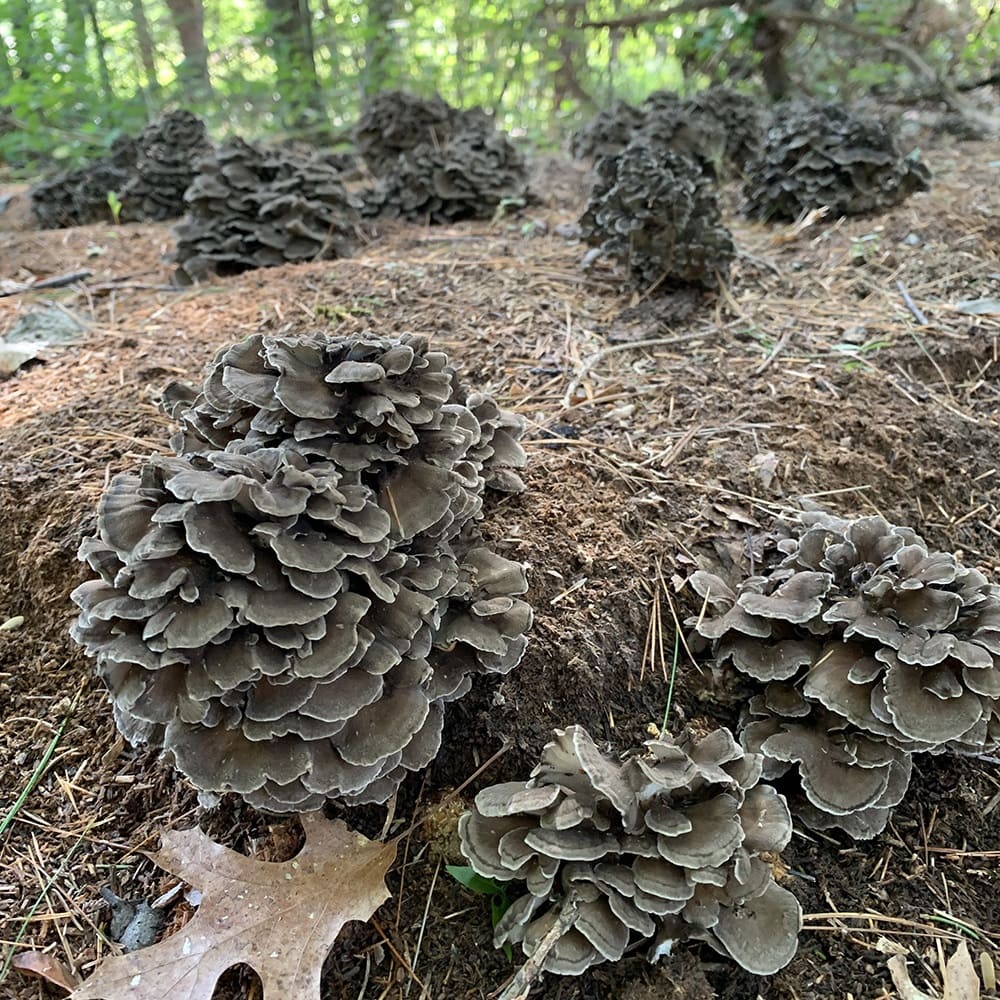
Maitakes are typically found in specialty stores during their fall season, though cultivated versions are becoming more available year-round. Look for clusters that feel firm and smell fresh and earthy—avoid any that seem slimy or have an off odor.
Enoki: The Textural Virtuosos
Enoki mushrooms look like tiny white fireworks with their long, thin stems and small caps. These delicate fungi bring something unique to the table: a crisp, almost crunchy texture that persists even after cooking. This characteristic makes them invaluable for adding textural interest to dishes, particularly Asian soups and noodle bowls.
Their flavor is clean and mild with subtle fruity notes, making them perfect for applications where you want texture without competing flavors. They’re wonderful raw in salads, where their crunch provides contrast, and essential in hot pot and ramen, where they maintain their bite even in hot broth.

When preparing enoki, trim away the spongy root end where the mushrooms were clustered together, then gently separate the strands. A quick rinse removes any growing medium, but be gentle—these delicate mushrooms bruise easily.
King Oyster Mushrooms: The Meat Substitute Champions
King oyster mushrooms are the premium members of the oyster family, featuring thick, substantial stems topped with small brown caps. What makes them remarkable isn’t just their size, but their texture—when properly prepared, king oyster stems can convincingly mimic scallops, both in appearance and mouthfeel.
The secret lies in how you cut and cook them. Slice the stem into thick rounds, score them in a crosshatch pattern, and sear them in a hot pan until golden. The result is surprisingly similar to seared scallops, complete with caramelized edges and tender centers. This technique has made king oysters darlings of high-end vegetarian restaurants.
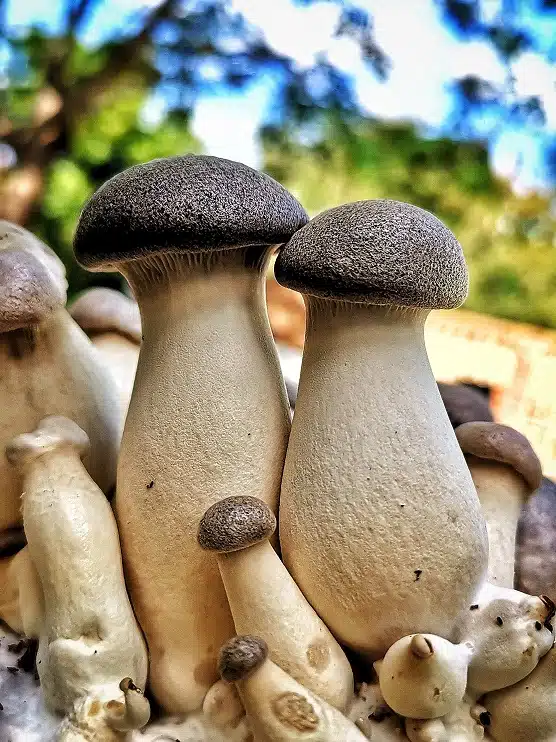
Their mild umami flavor absorbs seasonings beautifully, and their dense texture holds up to grilling, roasting, and other high-heat cooking methods that would destroy more delicate varieties. They’re also excellent shredded for “pulled” preparations, where their substantial texture provides satisfying chew.
Beech Mushrooms: The Crunchy Clusters
Also known as shimeji, beech mushrooms grow in tight clusters of small, firm mushrooms with long stems and button-like caps. They’re notable for their pronounced textural qualities—they remain pleasantly crunchy even when fully cooked, adding wonderful contrast to softer ingredients.
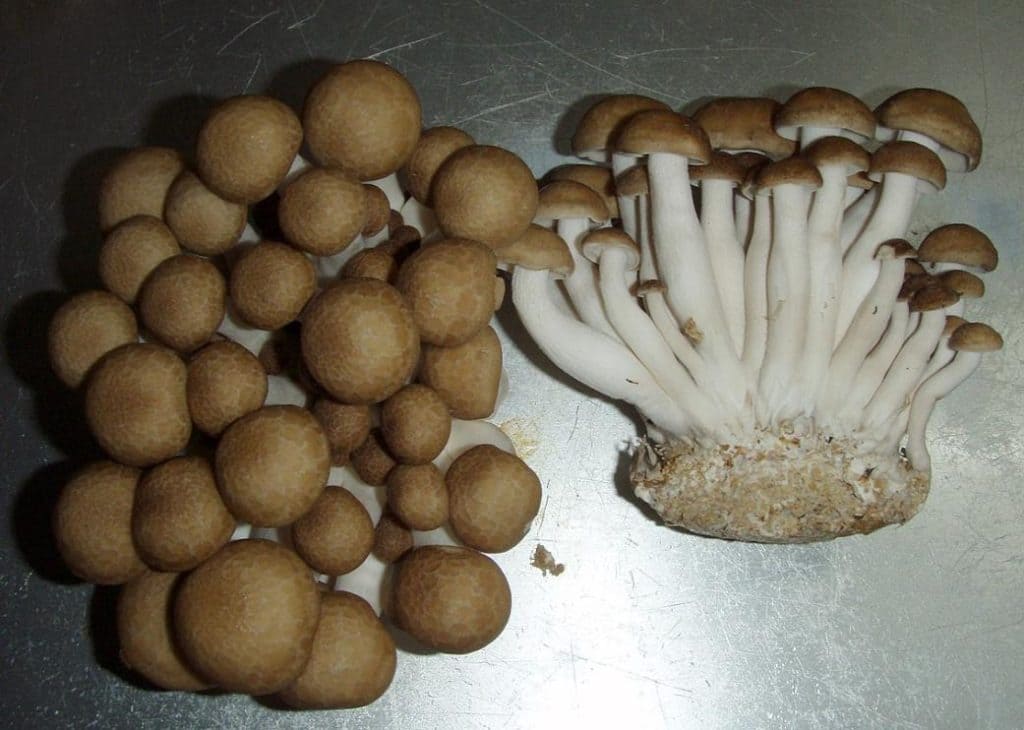
Raw beech mushrooms taste quite bitter, but cooking transforms them completely, revealing nutty, almost sweet flavors. This transformation makes them particularly popular in Japanese cuisine, where they’re often used in tempura, stir-fries, and hot pot preparations.
Their firm texture makes them excellent for applications where you want mushrooms that won’t disappear into the dish.
Chestnut Mushrooms: The Affordable Brown Alternative
Chestnut mushrooms are essentially a brown-capped cousin to button mushrooms, offering a budget-friendly way to add deeper mushroom flavors to your cooking.
Their rich brown color and slightly firmer texture provide more visual appeal and substance than standard white buttons, while their nutty, earthy flavor adds complexity without overwhelming delicate dishes.
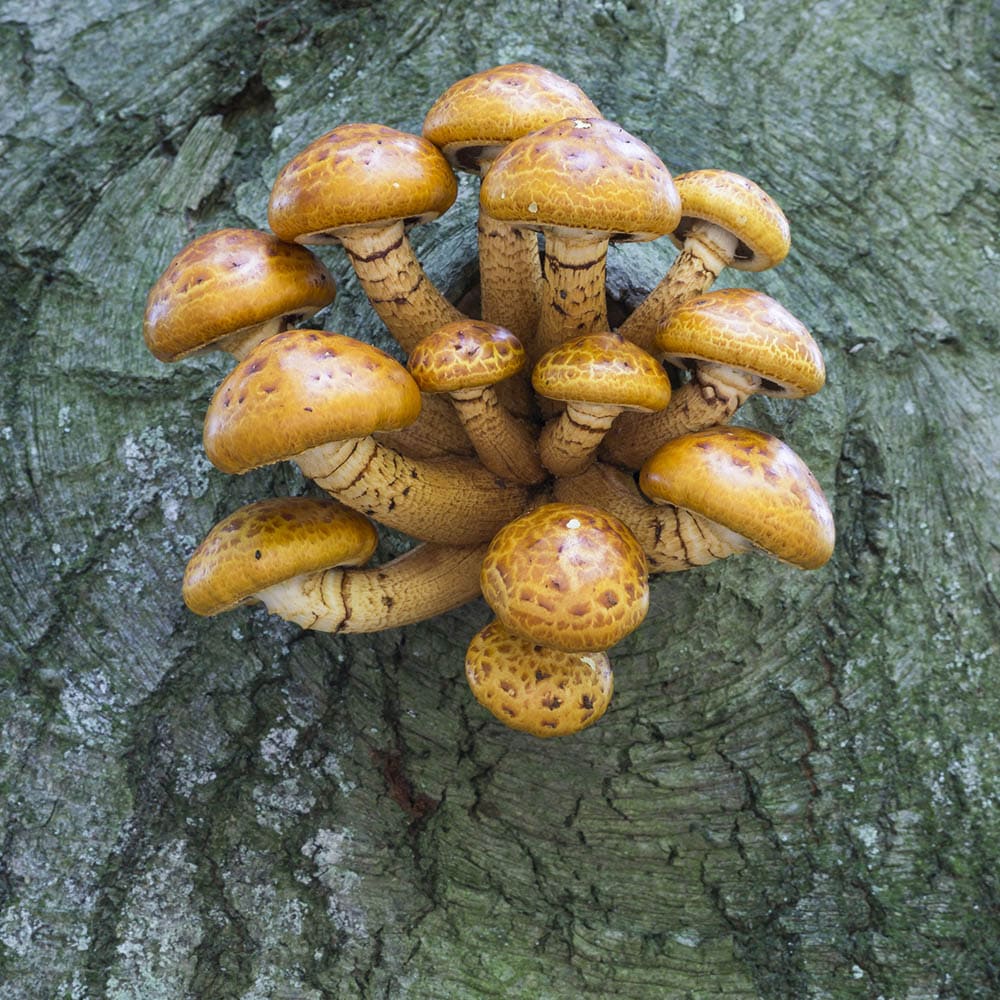
These mushrooms bridge the gap between basic buttons and premium varieties, making them perfect for cooks who want to upgrade their mushroom game without breaking the budget.
They work exceptionally well in cream-based sauces, where their robust flavor won’t be lost, and their attractive appearance makes them ideal for dishes where visual presentation matters.
Wood Ear Mushrooms: The Textural Specialists
Wood ear mushrooms, also called black fungus or tree ears, bring something completely unique to the table—a distinctive gelatinous, almost cartilaginous texture that remains consistent whether served hot or cold.
Popular in Chinese cuisine for centuries, these dark, rubbery mushrooms are prized more for their texture than flavor, which is quite mild and neutral. Their unique mouthfeel makes them invaluable in hot and sour soup, where they provide textural contrast, and in cold salads where their firm bite adds interest.
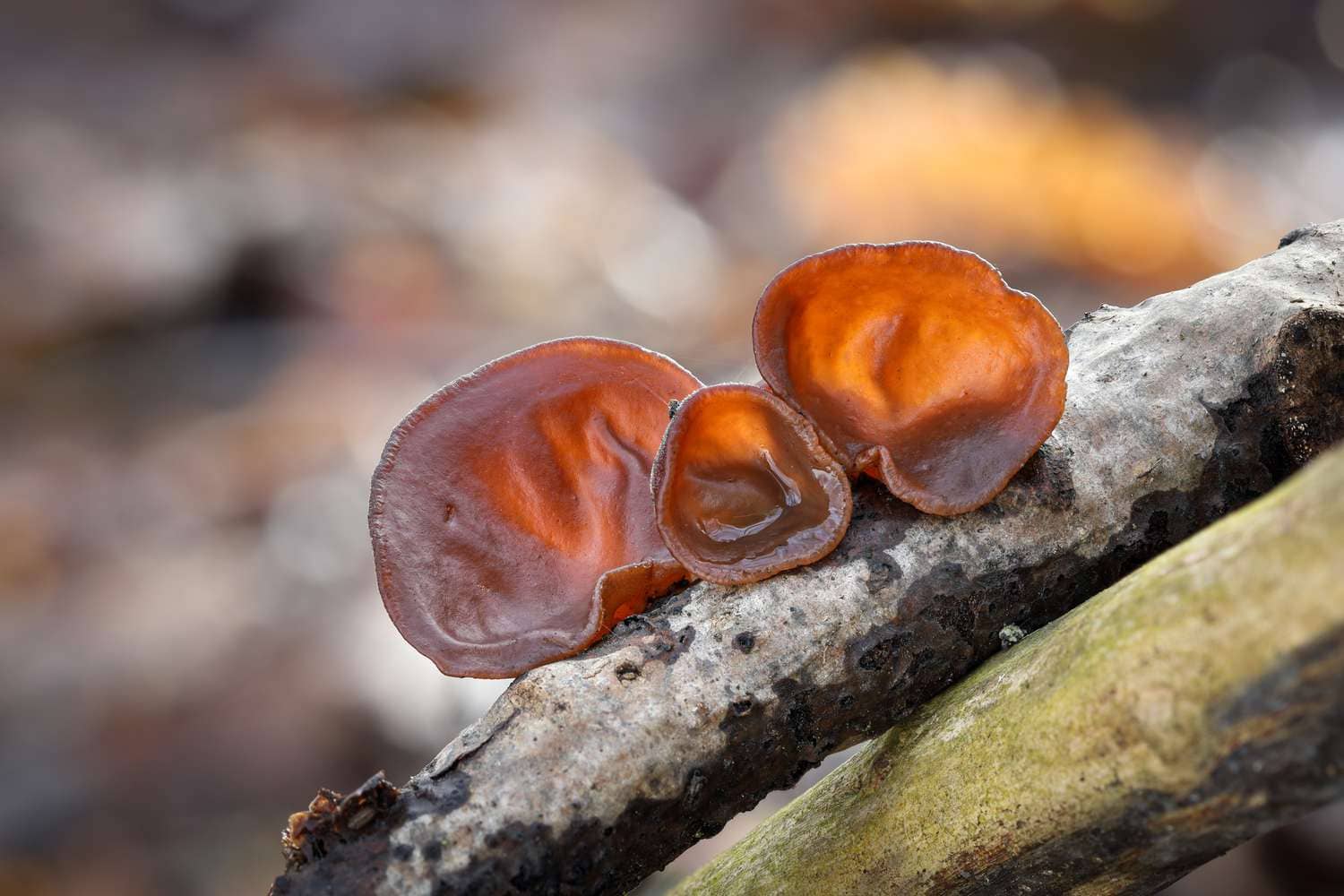
Wood ears readily absorb the flavors of whatever they’re cooked with, making them excellent vehicles for bold sauces and marinades. They’re typically sold dried and require soaking before use, expanding significantly when rehydrated.
Premium and Wild Varieties: For the Adventurous Cook
Chanterelle Mushrooms: Golden Treasures of the Forest
Chanterelles represent the intersection of culinary excellence and natural beauty. These golden, trumpet-shaped mushrooms are one of the most prized wild varieties, commanding premium prices not just for their rarity, but for their extraordinary flavor complexity.
Fresh chanterelles offer a unique combination of fruity and earthy flavors, with a distinctive apricot-like aroma and subtle peppery finish. Their firm, meaty texture holds up beautifully to various cooking methods, though their delicate flavor is best appreciated with simple preparations that don’t mask their natural characteristics.
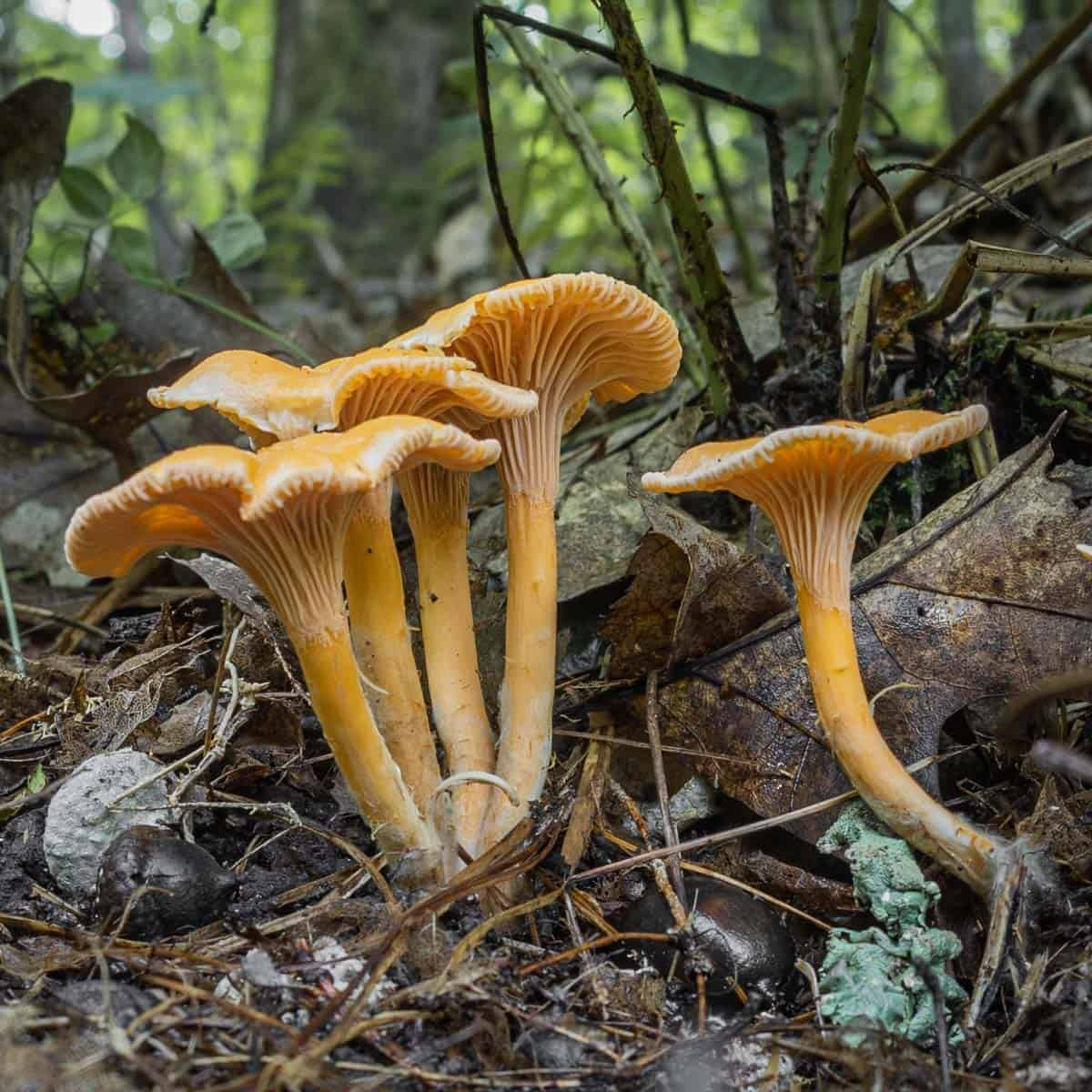
Because chanterelles form symbiotic relationships with tree roots, they resist cultivation and must be wild-harvested, typically from late summer through fall. This limited availability, combined with their popularity among chefs and food enthusiasts, keeps prices high—expect to pay $40-60 per pound when they’re in season.
The first time I cooked with chanterelles, I made the mistake of combining them with too many competing flavors. I learned that these beautiful mushrooms deserve to be the star, not a supporting player. Now I prepare them simply—sautéed in butter with fresh herbs—letting their natural complexity shine.
Morel Mushrooms: The Spring Ephemeral
Morels are perhaps the most mythologized mushrooms in American cuisine. These honeycomb-capped fungi appear for just a few weeks each spring, usually after the last frost when soil temperatures reach precisely the right range.
Their brief season and resistance to cultivation have created a passionate community of morel hunters who guard their secret foraging spots jealously.
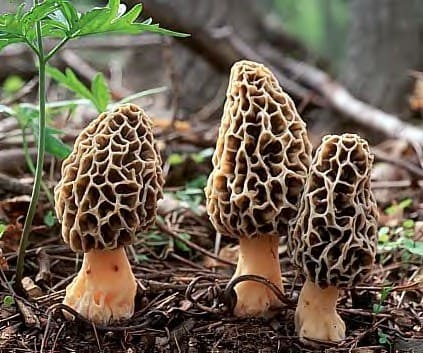
The flavor of fresh morels is intensely mushroomy—nutty, earthy, and deeply satisfying in a way that’s hard to describe but impossible to forget. Their distinctive honeycomb structure isn’t just visually striking; it creates pockets that hold sauces beautifully, making them exceptional in cream-based preparations.
Because morels contain small amounts of compounds that can cause digestive upset when raw, they must always be thoroughly cooked. This isn’t a hardship—proper cooking develops their flavors fully and creates the tender texture that makes them so prized.
Porcini Mushrooms: Italian Excellence
Porcini (which means “little pigs” in Italian) are the holy grail of European mushroom cuisine. These robust mushrooms feature thick white stems and broad brown caps that can reach impressive sizes. Fresh porcini have rich, nutty flavors with an almost creamy texture when properly cooked.
Most home cooks encounter porcini in dried form, where their flavors become incredibly concentrated. Dried porcini are actually preferable for many applications—they keep for months, and their intense flavor can transform simple dishes into something extraordinary.
The soaking liquid from rehydrated porcini becomes an incredibly flavorful stock that’s essential in authentic Italian risottos and pasta dishes.
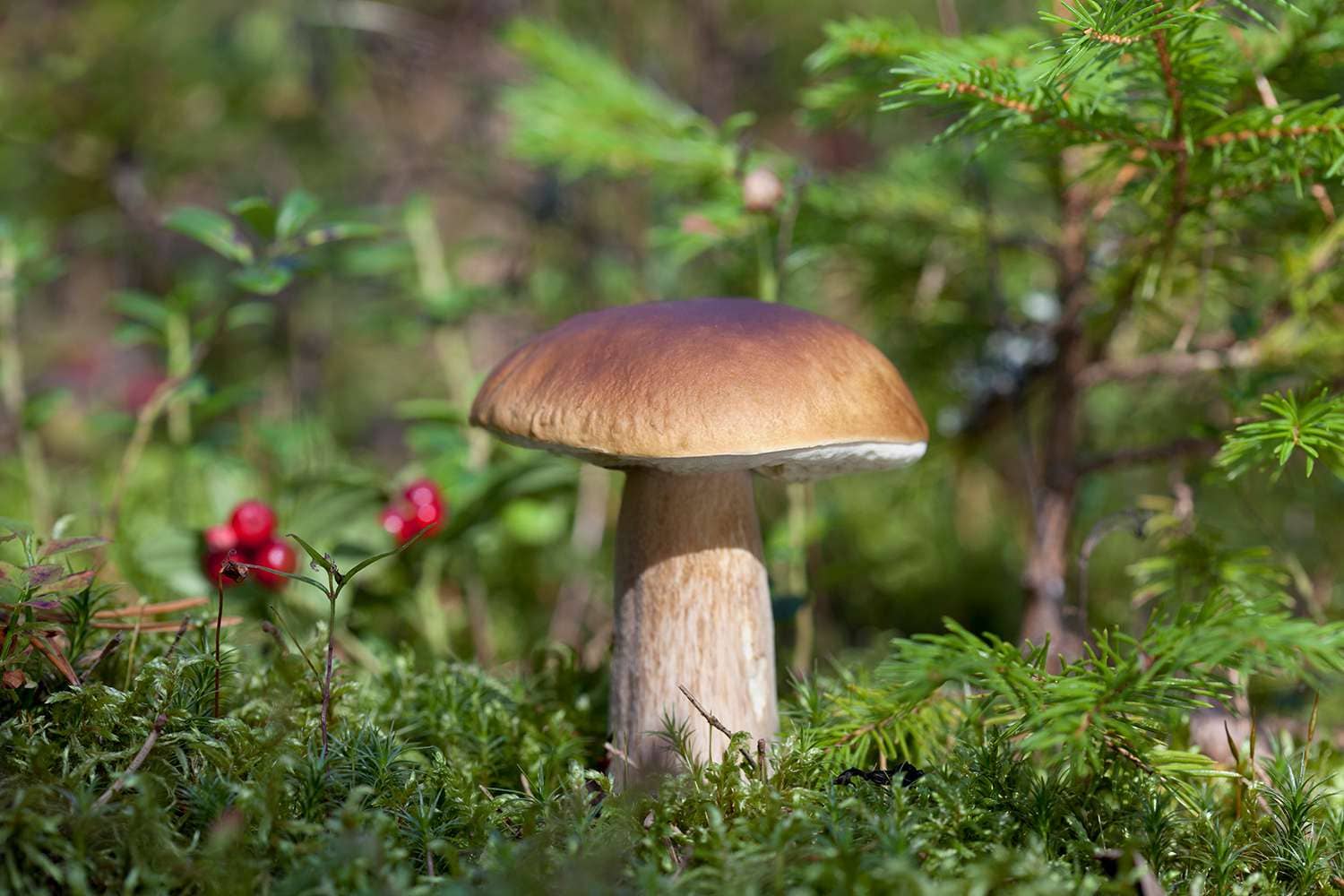
Fresh porcini can cost $60-80 per pound during their brief season, making them a special occasion ingredient. However, a small amount of dried porcini (much more affordable) can add profound depth to everyday mushroom dishes.
Lion’s Mane: The Seafood Imposter
Lion’s mane mushrooms look like something from another planet—white, shaggy masses that resemble cascading icicles or, well, a lion’s mane. But their appearance isn’t their most remarkable feature.
When cooked properly, lion’s mane mushrooms develop a texture and flavor remarkably similar to crab or lobster, making them extraordinary for plant-based seafood preparations.
Their mild, sweet flavor and naturally stringy texture make them perfect for applications like “crab” cakes, where they can fool even dedicated seafood lovers.
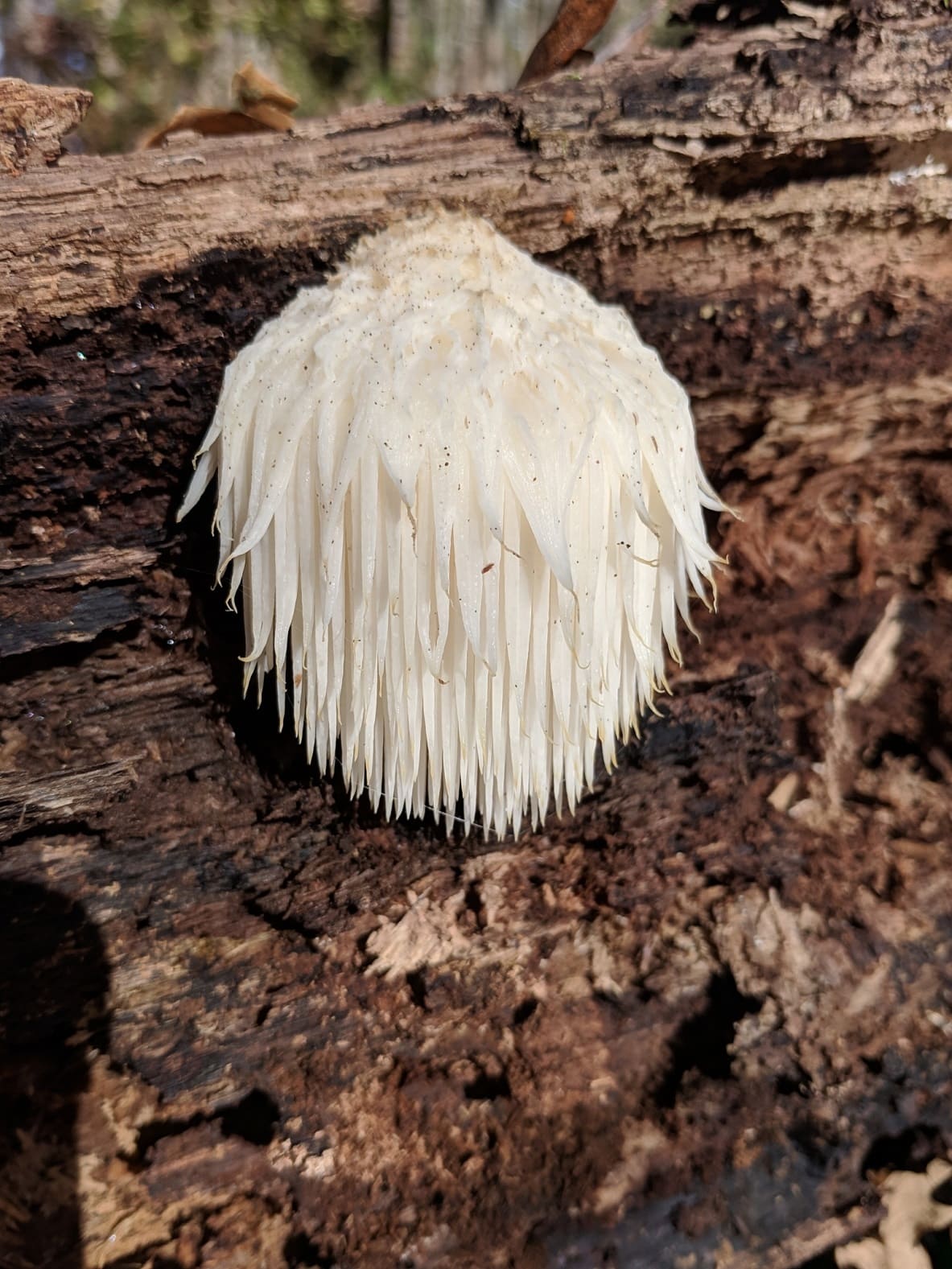
Unlike other mushroom-based meat substitutes that rely on seasonings and processing to mimic animal proteins, lion’s mane naturally provides the texture and subtle flavor that makes the illusion work.
Beyond their culinary applications, lion’s mane mushrooms are being extensively studied for potential cognitive benefits, though more human research is needed to confirm these effects.
Black Trumpet Mushrooms: The Truffle Alternative
Black trumpet mushrooms, also known as horn of plenty or trumpet of death (don’t worry—the dramatic name refers only to their dark appearance), offer one of the most sophisticated flavor experiences in the mushroom world.
These dark, funnel-shaped mushrooms provide rich, smoky flavors with fruity undertones that become even more complex when dried.
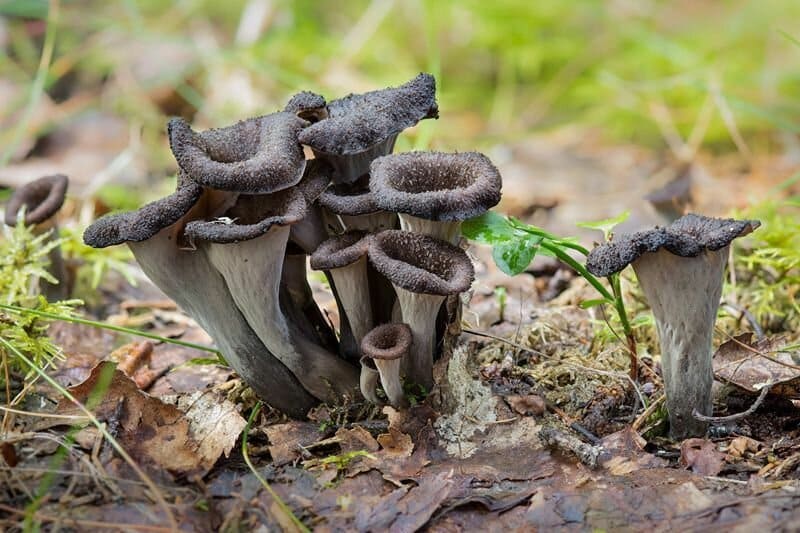
What makes black trumpets particularly exciting for home cooks is their affordability compared to truffles, despite offering similar earthy depth and complexity.
When dried and ground into powder, they create an umami-rich seasoning that can transform simple dishes into gourmet experiences. Their delicate texture means they cook quickly and are best added toward the end of cooking to preserve their nuanced flavors.
Found in late summer and fall, black trumpets grow in the same habitats as chanterelles and are prized by foragers for having no dangerous look-alikes, making them relatively safe for beginning mushroom hunters.
👉 Learn about Foraging Wild Cherries: Discovering The Nature’s Delights
Hedgehog Mushrooms: The Beginner’s Wild Mushroom
Hedgehog mushrooms, also called sweet tooth, offer wild mushroom newcomers a safe entry point into foraging. Their distinctive spiny undersides (resembling hedgehog quills) make them unmistakable, and they have no poisonous look-alikes.
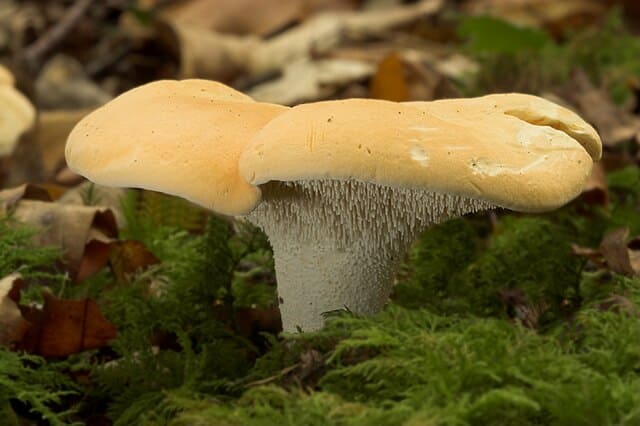
Their sweet, nutty flavor is similar to chanterelles but milder, making them appealing to those still developing their mushroom palate.
These cream to pale orange mushrooms have a firm texture that holds up well to various cooking methods. Young hedgehogs are tender and sweet, while older specimens can develop a slightly bitter edge.
They’re excellent sautéed simply in butter, added to cream sauces, or incorporated into risottos where their subtle flavor can shine without competing with other ingredients.
👉 Here’s How To Attract Hedgehogs to Your Garden with These Simple Tips
Lobster Mushrooms: The Transformed Beauties
Lobster mushrooms present one of nature’s most fascinating culinary transformations. These aren’t actually a distinct mushroom species, but rather the result of a parasitic mold (Hypomyces lactifluorum) that attacks other mushrooms, turning them bright red-orange and dramatically altering their flavor and texture.
The transformation process creates mushrooms with a dense, meaty texture and a flavor that genuinely evokes seafood—hence the name. Their firm flesh makes them excellent for grilling or roasting, and their striking color adds visual drama to any dish.
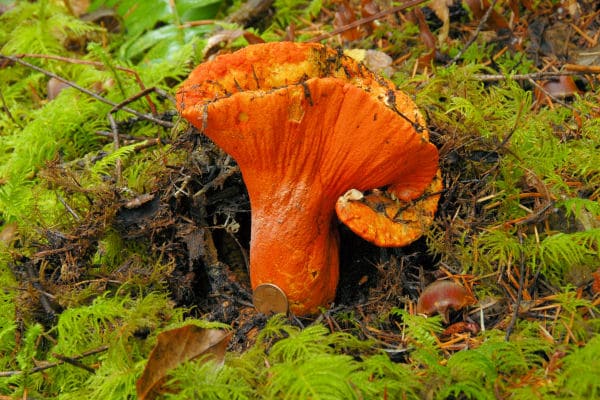
Lobster mushrooms are particularly wonderful in bisques and cream soups, where their seafood-like flavor creates depth without any actual seafood.
Because they’re essentially wild mushrooms that have been naturally transformed, lobster mushrooms command premium prices when available, typically appearing in specialty markets during late summer and fall.
Matsutake Mushrooms: The Crown Jewel
Matsutake mushrooms represent the pinnacle of mushroom luxury, commanding prices that can reach $80 per individual mushroom for the finest specimens. These Japanese treasures have a distinctive spicy, pine-like aroma and complex flavor that’s been celebrated in Asian cuisine for thousands of years.
What makes matsutake so expensive isn’t just their flavor—it’s their resistance to cultivation and extremely specific growing requirements.
They form relationships with the roots of specific pine trees and can only be found in the wild during a brief autumn season. Climate change and forest destruction have made them increasingly rare, driving prices to astronomical levels.
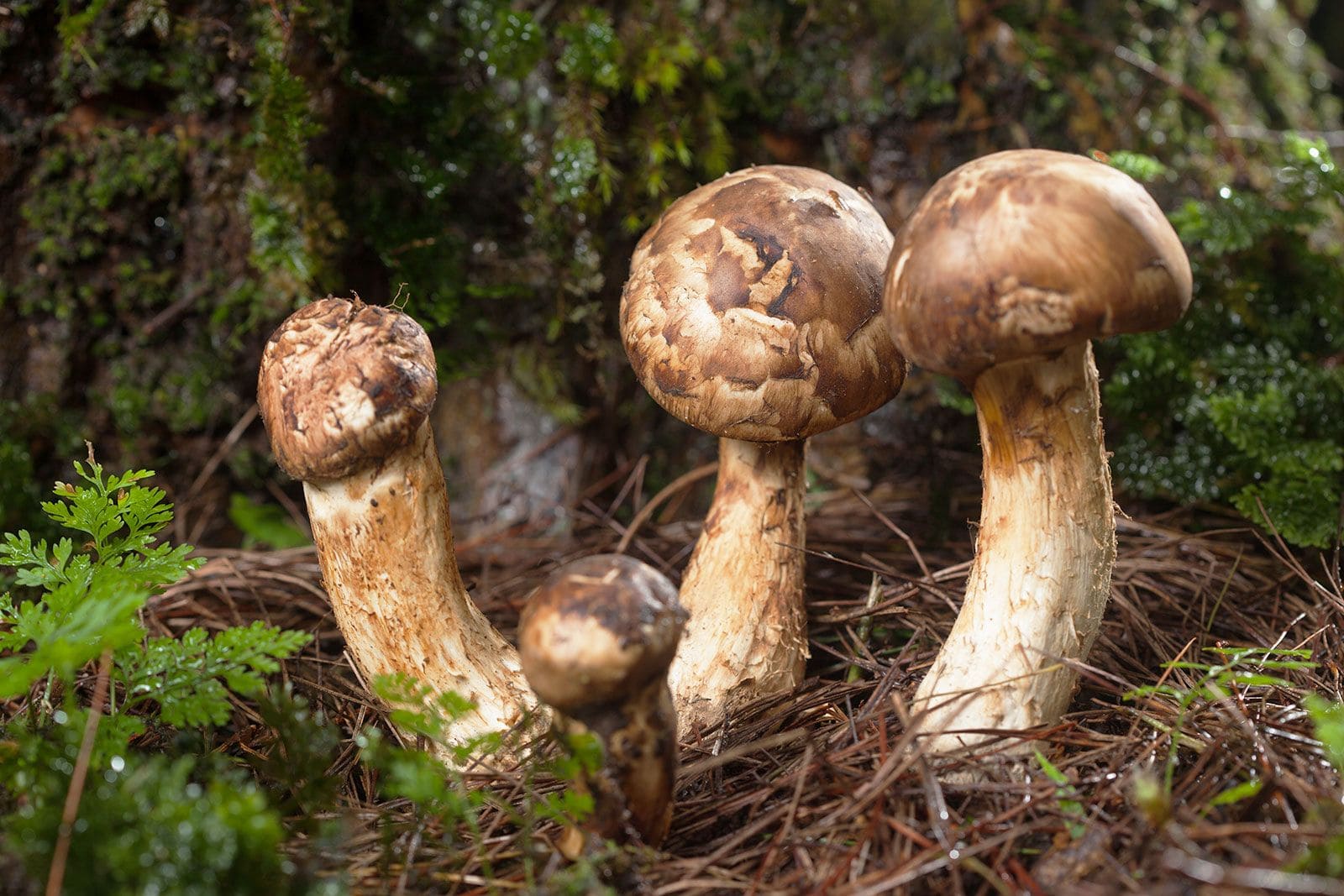
The traditional Japanese preparation showcases matsutake simply—grilled over charcoal or simmered in clear broths where their distinctive aroma can be fully appreciated. Unlike other premium mushrooms that work well with rich accompaniments, matsutake are best experienced with minimal interference, allowing their unique character to shine.
Truffle Mushrooms: The Underground Treasures
Truffles occupy a unique position in the mushroom world—technically they’re fungi, but they grow entirely underground and have flavors so concentrated and distinctive that they’re used more like a seasoning than a primary ingredient.
These irregular, knobby specimens are among the most expensive foods in the world, with premium varieties commanding thousands of dollars per pound.
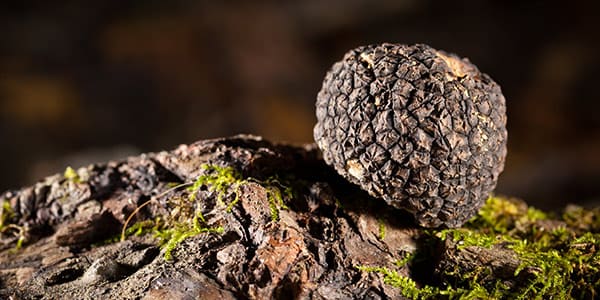
The two main culinary varieties are black truffles (Tuber melanosporum) and white truffles (Tuber magnatum). Black truffles have an intense, earthy flavor that stands up to cooking, while white truffles offer more delicate, garlicky notes and are typically shaved raw over finished dishes.
Because truffles lose their potency quickly after harvest, most home cooks encounter them as truffle oil, truffle salt, or other preserved products. However, be aware that many commercial truffle products contain synthetic truffle flavoring rather than real truffles—check ingredients carefully if authenticity matters to you.
Cauliflower Mushrooms: The Architectural Wonders
Cauliflower mushrooms (Sparassis crispa) create some of the most stunning displays in the mushroom world, growing in large, ruffled masses that can reach impressive sizes.
Their intricate, coral-like structure isn’t just beautiful—it provides extensive surface area that crisps beautifully when roasted, creating textural contrast between crispy edges and tender centers.
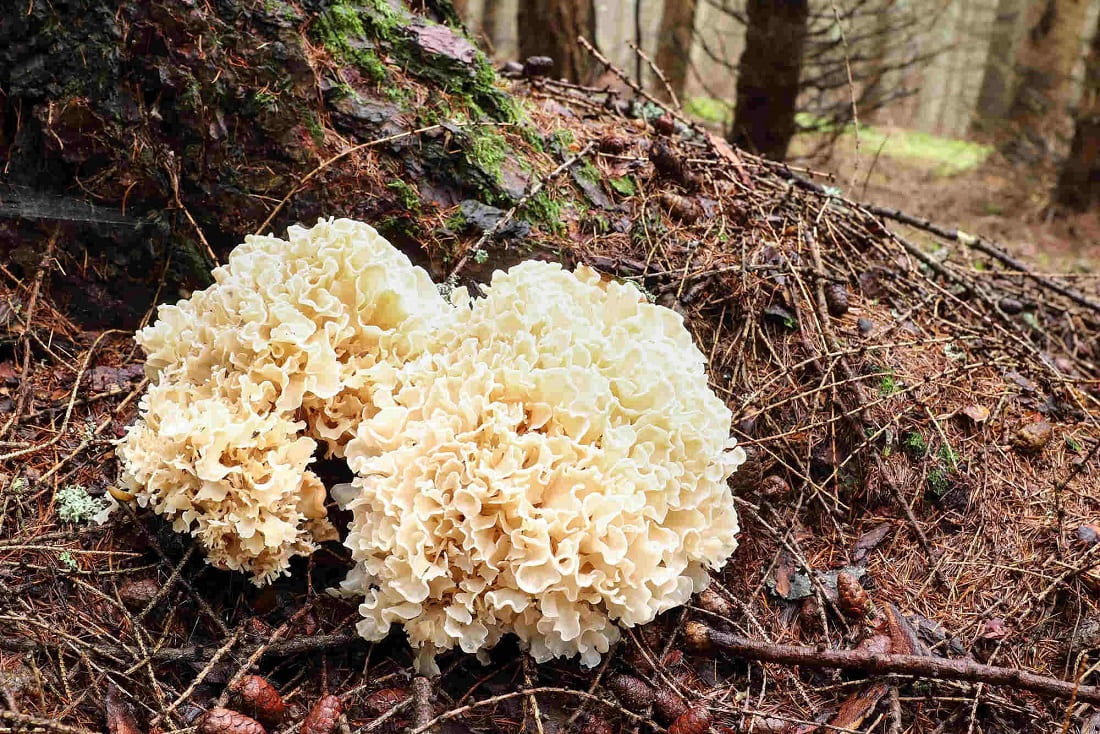
These substantial mushrooms have a mild, nutty flavor and a pleasantly chewy texture. Their complex structure requires thorough cleaning to remove debris trapped in the folds, but the effort pays off in both visual impact and satisfying eating.
They’re particularly wonderful roasted whole and served as a centerpiece for vegetarian meals, where their dramatic appearance creates instant wow factor.
Honey Mushrooms: The Abundant Clusters
Honey mushrooms grow in massive clusters on dying trees, often producing enough mushrooms from a single location to feed a family for weeks. Their golden-brown color and sweet honey-like aroma give them their common name, though their flavor is more complex—earthy and slightly tangy with subtle sweetness.

These mushrooms require thorough cooking to be safe for consumption, as they can cause digestive upset when undercooked.
However, properly prepared honey mushrooms offer excellent value for foragers, as their abundant growth and distinctive clustering make them relatively easy to identify and harvest in large quantities. They’re excellent in soups and stews where their flavor has time to develop fully.
Medicinal Mushrooms: Beyond the Kitchen
While this guide focuses primarily on culinary mushrooms, it’s worth noting several varieties prized more for their health benefits than their flavors. These medicinal mushrooms are typically consumed as powders, extracts, or supplements rather than whole foods, though some can be incorporated into cooking.
Reishi: The Mushroom of Immortality
Reishi mushrooms (Ganoderma lucidum) have been called the “mushroom of immortality” in traditional Chinese medicine. These woody, cork-like fungi are too bitter and tough to eat fresh, but their concentrated extracts are valued for potential stress-reduction and immune-supporting properties.
Reishi has a distinctive shiny, varnish-like appearance and grows on hardwood trees.

While scientific research on reishi’s health benefits is ongoing, it’s generally considered safe and is widely available as a supplement. Some adventurous cooks incorporate reishi powder into teas, smoothies, or even chocolate preparations, where its bitter notes can be balanced with other flavors.
Turkey Tail: The Immune System Supporter
Turkey tail mushrooms (Trametes versicolor) get their name from their fan-shaped growth pattern and concentric color rings that resemble a wild turkey’s tail feathers. These common bracket fungi grow on dead wood throughout North America and are being extensively studied for their potential cancer-fighting and immune-supporting compounds.
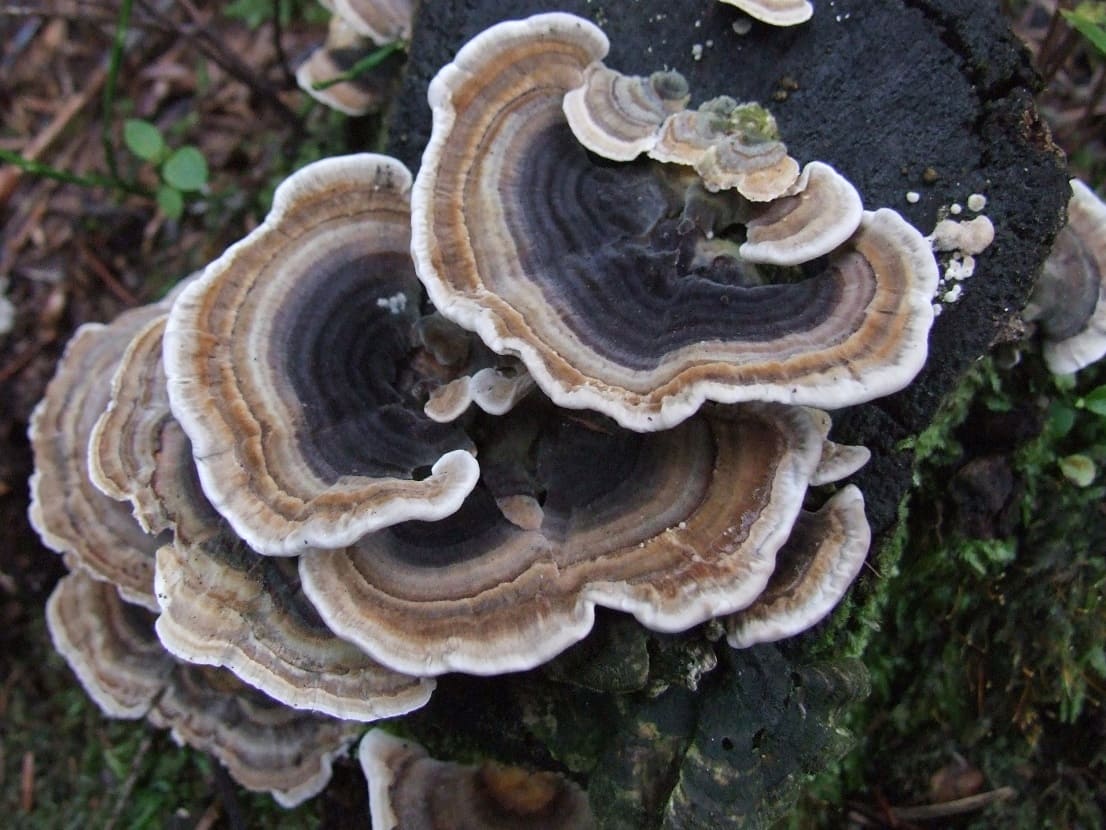
Turkey tail is typically consumed as a tea or extract rather than eaten whole, as the mushrooms are quite tough and woody. The preparation involves hot water extraction to concentrate the beneficial polysaccharides and other bioactive compounds.
Cordyceps: The Energy Enhancer
Cordyceps mushrooms have one of the most unusual life cycles in the fungal kingdom—wild varieties actually parasitize insects, growing out of caterpillars and other hosts. Fortunately, commercially available cordyceps are cultivated on grain substrates, avoiding this somewhat unsettling origin story.
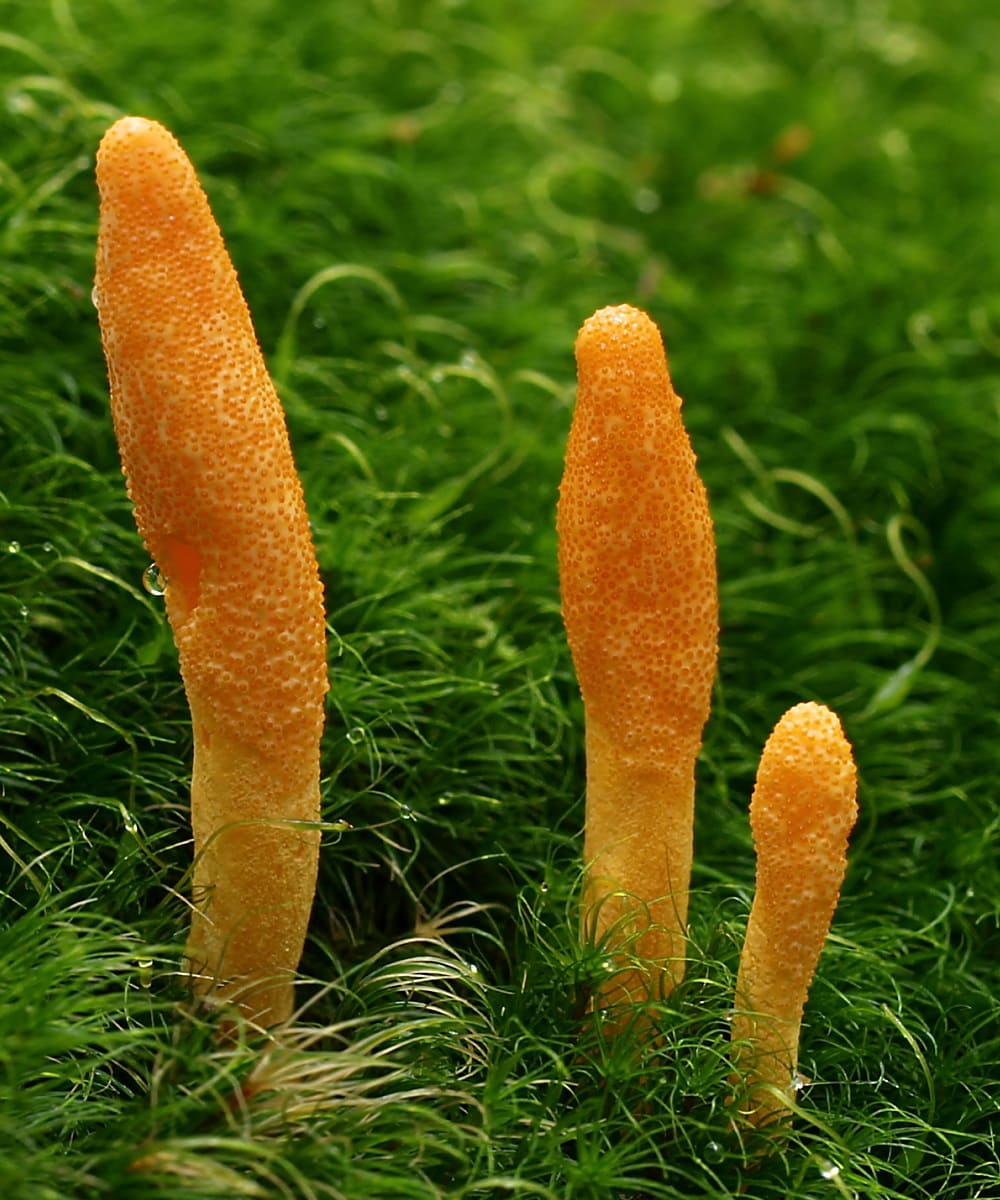
Prized in traditional Tibetan and Chinese medicine for enhancing energy and athletic performance, cordyceps supplements have gained popularity among fitness enthusiasts and those seeking natural energy support. The flavor is mild and slightly sweet, making cordyceps powder easy to incorporate into smoothies and health drinks.
The Science of Mushroom Cooking: Getting the Best Results
Understanding a bit about mushroom biology helps explain why certain cooking techniques work better than others. Mushrooms are roughly 90% water, held within cellular structures that break down when heated.
This means that how you manage moisture during cooking determines whether you’ll end up with beautifully browned, flavorful mushrooms or soggy, gray disappointments.
The key to exceptional mushroom cookery is high initial heat in a dry pan. This quickly evaporates surface moisture, allowing the mushrooms to brown rather than steam. Once you see golden edges developing, you can add fats like butter or oil to promote further browning and carry fat-soluble flavors.
Crowding the pan is the enemy of good mushroom cookery. Too many mushrooms in a small space creates steam that prevents browning. Cook in batches if necessary—the extra effort pays off in dramatically better results.
Salt timing matters too. Adding salt early draws out moisture, which can be helpful if you’re making a sauce where you want concentrated mushroom liquid. But for browning, add salt near the end to avoid interfering with the browning process.
Different mushroom varieties respond differently to various cooking methods. Delicate varieties like enoki or oyster mushrooms need gentle, quick cooking to preserve their texture.
Substantial varieties like portobellos or king oysters can handle aggressive heat and longer cooking times. Dried mushrooms need rehydration time but reward patience with concentrated flavors.
👉 Here’s How to Dehydrate Apples at Home: Easy Steps for Perfect Results
Seasonal Shopping and Storage Strategies
Successful mushroom cooking starts with smart shopping and proper storage. Understanding seasonal patterns helps you plan meals around peak availability and quality while managing costs effectively.
Cultivated mushrooms like buttons, creminis, shiitakes, and oysters are available year-round, making them reliable staples for weekly meal planning. However, even these can vary in quality—mushrooms grown slowly in cooler conditions often have better texture and more concentrated flavors than those rushed to market.
Wild and foraged varieties follow natural seasons.
- Spring brings morels and early chanterelles.
- Summer offers peak chanterelle season, along with chicken of the woods and various boletes.
- Fall is the golden season for most wild varieties—maitakes, late chanterelles, honey mushrooms, and various specialized regional varieties.
- Winter is lean for most wild mushrooms, though some hardy varieties like oyster mushrooms can be found year-round.
Proper storage extends mushroom life significantly. The key is managing moisture while allowing air circulation. Paper bags work perfectly for this—they absorb excess moisture while preventing the condensation that plastic creates. Store mushrooms in the refrigerator’s main compartment, not the crisper drawer, where humidity levels can be too high.
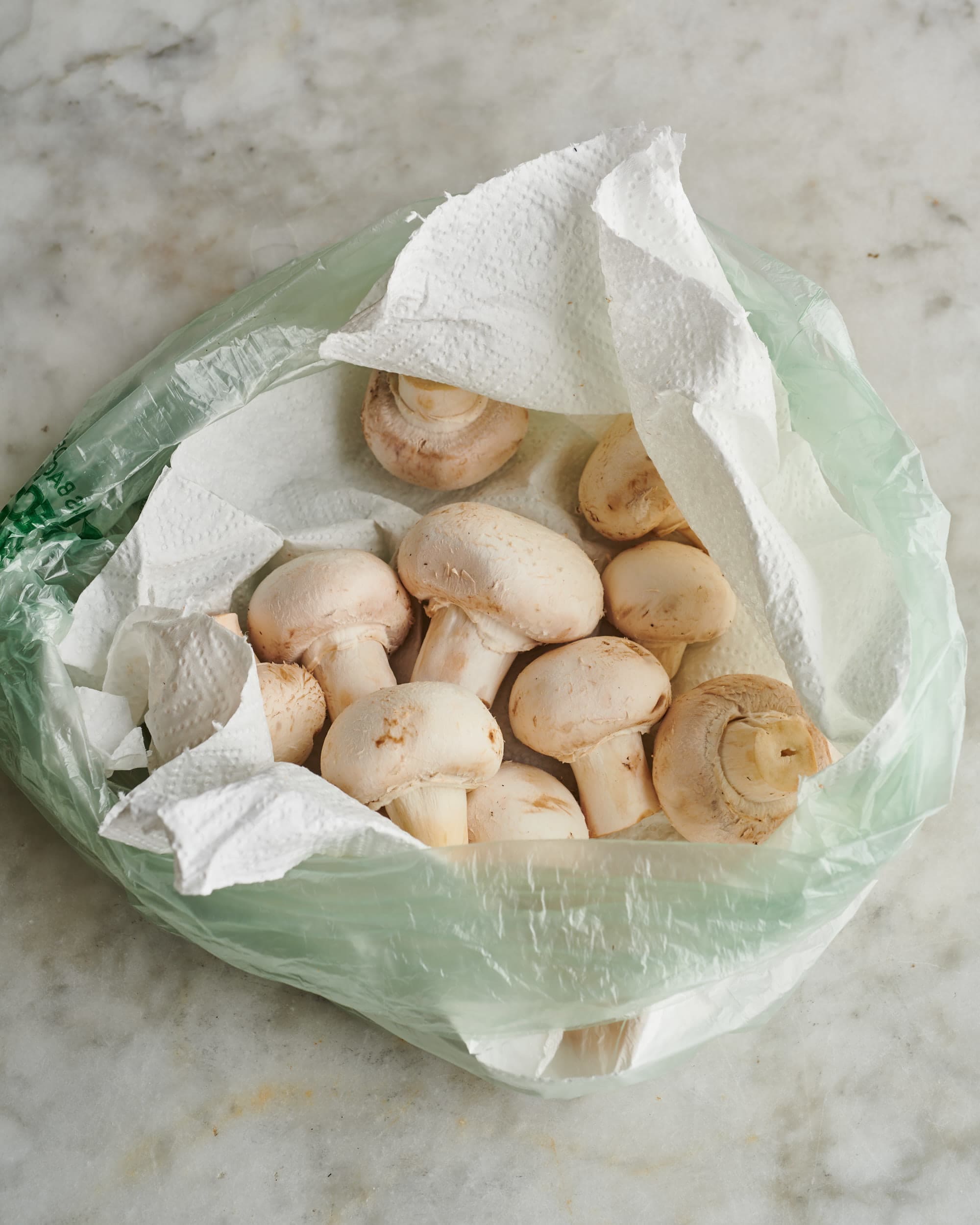
Never store mushrooms in sealed plastic bags or containers. The trapped moisture creates perfect conditions for bacterial growth and rapid spoilage. If you only have plastic bags available, leave them open or poke holes for air circulation.
Most fresh mushrooms last five to seven days when properly stored, though some hardy varieties like king oysters can last up to ten days. Check them periodically and use any that start to soften first.
Safety Considerations: When and Where to Take Risks
While this guide focuses on commercially available mushrooms, the allure of wild foraging draws many mushroom enthusiasts. However, mushroom identification requires serious expertise—some poisonous varieties closely resemble edible ones, and mistakes can be fatal.
If you’re interested in foraging, start by joining local mycological societies or taking guided forays with experienced hunters. Many regions offer mushroom identification courses through universities or nature centers.
Never consume wild mushrooms unless you’re absolutely certain of their identification, and even then, start with small amounts to test for personal sensitivity.
For purchased mushrooms, quality issues are usually about freshness rather than safety. However, always inspect mushrooms before cooking. Fresh mushrooms should feel firm and smell pleasantly earthy. Avoid any with slimy spots, strong ammonia odors, or unusual discoloration.
Some people are sensitive to certain mushroom varieties, even common ones. If you’re trying a new variety, start with a small amount to test your reaction, particularly with more exotic species.
👉 Learn about Dead Man’s Fingers Fungi: A Spooky Discovery in Your Garden
Health Benefits: More Than Just Flavor
The nutritional benefits of mushrooms extend far beyond their culinary applications. Different varieties offer unique compounds that support various aspects of health, making them valuable additions to any diet focused on wellness.
Most mushrooms are excellent sources of B vitamins, particularly riboflavin, niacin, and pantothenic acid, which support energy metabolism and nervous system function. They’re also rich in selenium, a powerful antioxidant mineral that many people don’t get enough of from other foods.
Many mushroom varieties contain beta-glucans, complex carbohydrates that support immune system function. Shiitake and maitake mushrooms are particularly rich in these compounds, which may help explain their traditional use in Asian medicine systems.
The protein content of mushrooms, while not complete, provides valuable amino acids including ergothioneine, a powerful antioxidant that’s difficult to obtain from other food sources. Some research suggests ergothioneine may help protect against age-related cognitive decline, though more human studies are needed.
For vegetarians and vegans, UV-exposed mushrooms provide one of the few non-animal sources of vitamin D. Many commercial mushroom producers now expose their products to UV light specifically to boost vitamin D content, making them valuable for people with limited sun exposure or those following plant-based diets.
Looking Forward: Your Mushroom Adventure Begins
The world of mushrooms offers endless opportunities for culinary exploration and nutritional benefits. Starting with familiar varieties and gradually expanding your repertoire allows you to build confidence while discovering new favorites.
Remember that taste preferences are individual—not every variety will appeal to every palate, and that’s perfectly normal.
Consider keeping a mushroom journal noting varieties you’ve tried, cooking methods that worked well, and flavor combinations you enjoyed. This personal reference becomes invaluable as you build your mushroom repertoire and can help you remember what to buy during different seasons.
Most importantly, stay curious and willing to experiment. The mushroom aisle that once seemed intimidating will become a source of inspiration for countless memorable meals.
Whether you’re drawn to the reliable satisfaction of perfectly cooked creminis or the exotic adventure of your first lion’s mane “crab” cake, each new variety you try expands your culinary horizons.
Your mushroom journey starts with a single step—or in this case, a single variety. Which one will you choose first? The fungi kingdom awaits, ready to transform your cooking one delicious mushroom at a time.
